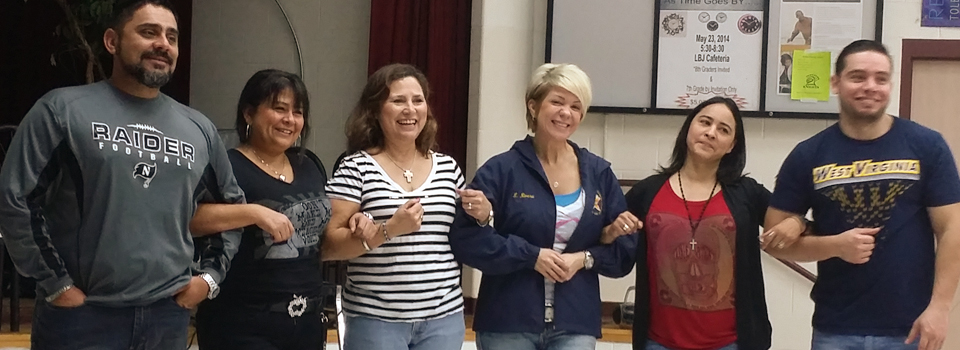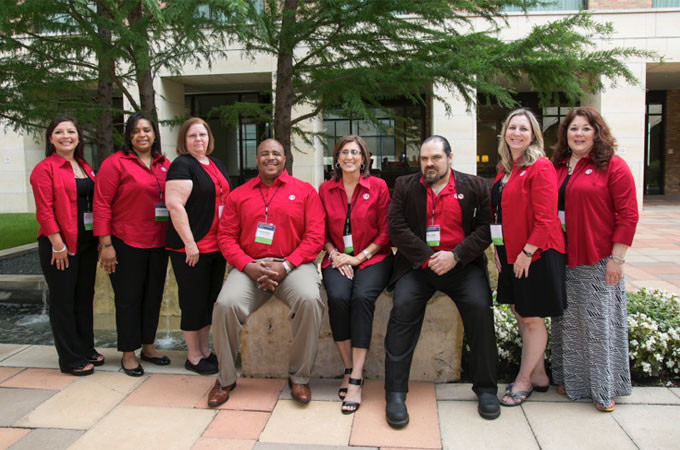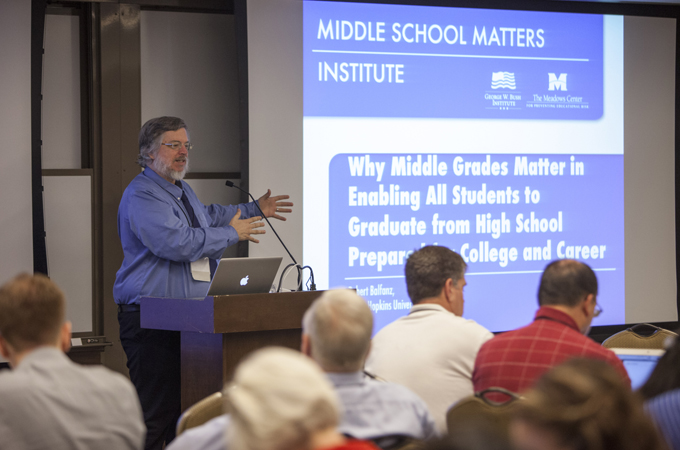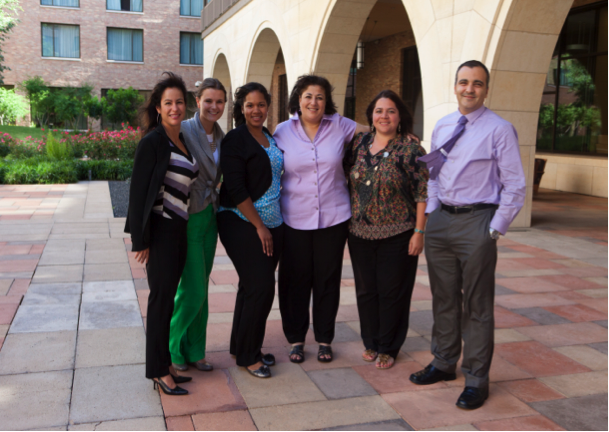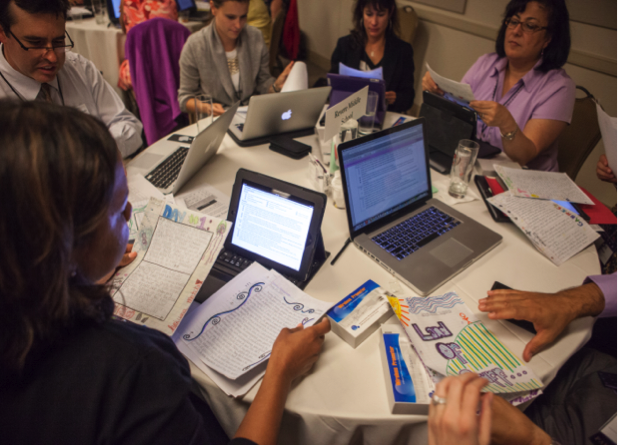This installment of the Middle School Matters Institute Blog focuses on the importance of writing in the middle grades.
Contributors:
Steve Graham, Ph.D., Arizona State University (Research Perspective)
Leslie Feinglas, Ed.D., Principal, Wilkinson Middle School in Mesquite, Texas (Practice Perspective)
The Research Perspective
There are many reasons why people write. One of my favorite explanations comes from the present day master of horror, Stephen King, who indicated that he writes such gross books because “I have the heart of a small boy—and I keep it in a jar on my desk.” Another explanation that resonates with me as an educator is E.M. Forester’s observation: “How do I know what I think until I see what I say?” Or as Alfred Kazin, the American writer and literary critic, succinctly put it: “The writer writes in order to teach himself.”
The basic idea underlying Forester’s and Kazin’s observations is that writing helps you understand better what you already know and what you are coming to know. So what does this mean for middle school students? It means that writing provides a tool to help them learn and more fully comprehend ideas presented in class and their textbooks. On average, students experience about a 10-point percentile jump in learning when they write about information presented in science, social studies, math, and other content classes (Graham & Perin, 2007). Comprehension scores increase by almost 20 percentile points when students write about the text they are reading in these same classes (Graham & Hebert, 2011).
Why does writing make such a difference in students’ learning and understanding? Simply put, it makes you think more deeply about ideas. Writing fosters explicitness, as students must decide what to write and which ideas are most important. Writing is integrative, as it encourages students to establish relationships between selected ideas and organize the ideas into a coherent whole. Writing facilitates reflection, as the permanence of writing makes it easier for students to review, re-examine, connect, critique, and even construct new understandings of ideas they have committed to paper. Writing fosters a personal involvement with ideas, as it requires active decision-making about what is written and how it is treated. Writing involves students putting ideas into their own words, making them think about what the ideas mean. In short, writing about ideas provides middle school students with a tool for visibly and permanently recording, connecting, analyzing, personalizing, and manipulating information to be understood and learned (Applebee, 1984; Graham & Hebert, 2011; Klein, 1999).
This does not mean that comprehension and learning are automatically enhanced when students write about ideas. Consider the following examples from four students:
A hamlet is a little pig.
The Treaty of Trianon cost Hungary more than sixth-fifths of its land.
An active verb shows action, as “he kissed her”; and a passive verb shows passion, as “she kissed him.”
With all the uses of rubber, it was necessary to find a substitute. After all, rubber does not grow on trees.
In each of these examples, writing provides a window into students’ misconceptions about specific ideas, but it did not appear to facilitate learning. Like any tool, writing is likely to be of little use if a student does not know how to apply it effectively. Fortunately, there is an easy remedy for this situation—students can be taught how to apply specific writing strategies as learning tools.
To illustrate, writing a short synopsis or summary of material presented in class or a textbook can improve students’ understanding of such information (Graham & Hebert, 2011). Writing a short synopsis is not an easy task, however, as students must determine which ideas are most important, which ideas are trivial and redundant, how ideas connect to one another, and the core idea underlying the material to be summarized. One way to ensure that students can write such a synopsis successfully is to present them with a strategy for creating a summary, describe how the strategy works and when to use it, model how to apply the strategy to relevant classroom material, and provide guided practice in using the strategy until students can apply it effectively and on their own.
Another approach for teaching summarization is to show students model summaries of classroom material, discussing with them what makes these models good summaries. Next, students are shown additional models with one part of the summary missing (e.g., a sentence providing important details). They supply the missing part and discuss how well their various attempts to solve this problem worked. This basic approach is repeated with additional material deleted from the summary until students complete the full summary on their own.
Other writing activities that can effectively support middle school students’ understanding and learning of academic content include taking notes from a lecture or text; answering or generating written questions about classroom material; writing journal entries guided by open-ended questions about key concepts; and working on extended writing projects that involve applying key ideas to a new situation, defending a specific perspective related to these ideas, or personalizing the ideas (e.g., asking students to write about how their life as an adolescent differs from the life of Frederick Douglas as an adolescent).
I would like to close with a simple, but not much practiced proposition. Teaching middle school students how to use writing as a tool to support learning is not the responsibility of the English teacher. It is the responsibility of all middle school teachers (Graham, Cappizi, Harris, Hebert, & Morphy, 2014). It is clear that writing about academic content can improve learning, but students need to know how to do write academic content in each discipline. Although middle school students sometimes use similar writing strategies for learning in subjects such as science, English, and history, they typically use these strategies for different purposes and in different ways (Southern Regional Educational Board, 2013). A social studies teacher is much more qualified than an English teacher to teach students to think and write like a historian, just as a science teacher is better at teaching students to think and write like a scientist.
Below, Leslie Feinglas of Wilkinson Middle School, a Middle School Matters “Tier III support” school, shares the school’s experience incorporating research-based writing practices within each content area to support students’ reading comprehension and content area learning.
Reflections From the Field
Wilkinson Middle School is in Mesquite, Texas, and has 950 students in grades 6 to 8. The student population is roughly 60% Hispanic, 33% African American, and 7% Caucasian. We receive Title I services because we are 88% economically disadvantaged. Many students come to us struggling with reading, so our campus decided to focus on reading and writing across all content areas after attending the Middle School Matters Institute Summer Conference. With the help of the Middle School Matters Institute, we implemented three practices to increase the amount of time our students spend reading and writing across the content areas: (1) the writing to learn strategy, (2) exit tickets, and (3) explicit instruction with modeling and think-alouds. The following is a description of how each content area uses the strategies in the classroom.
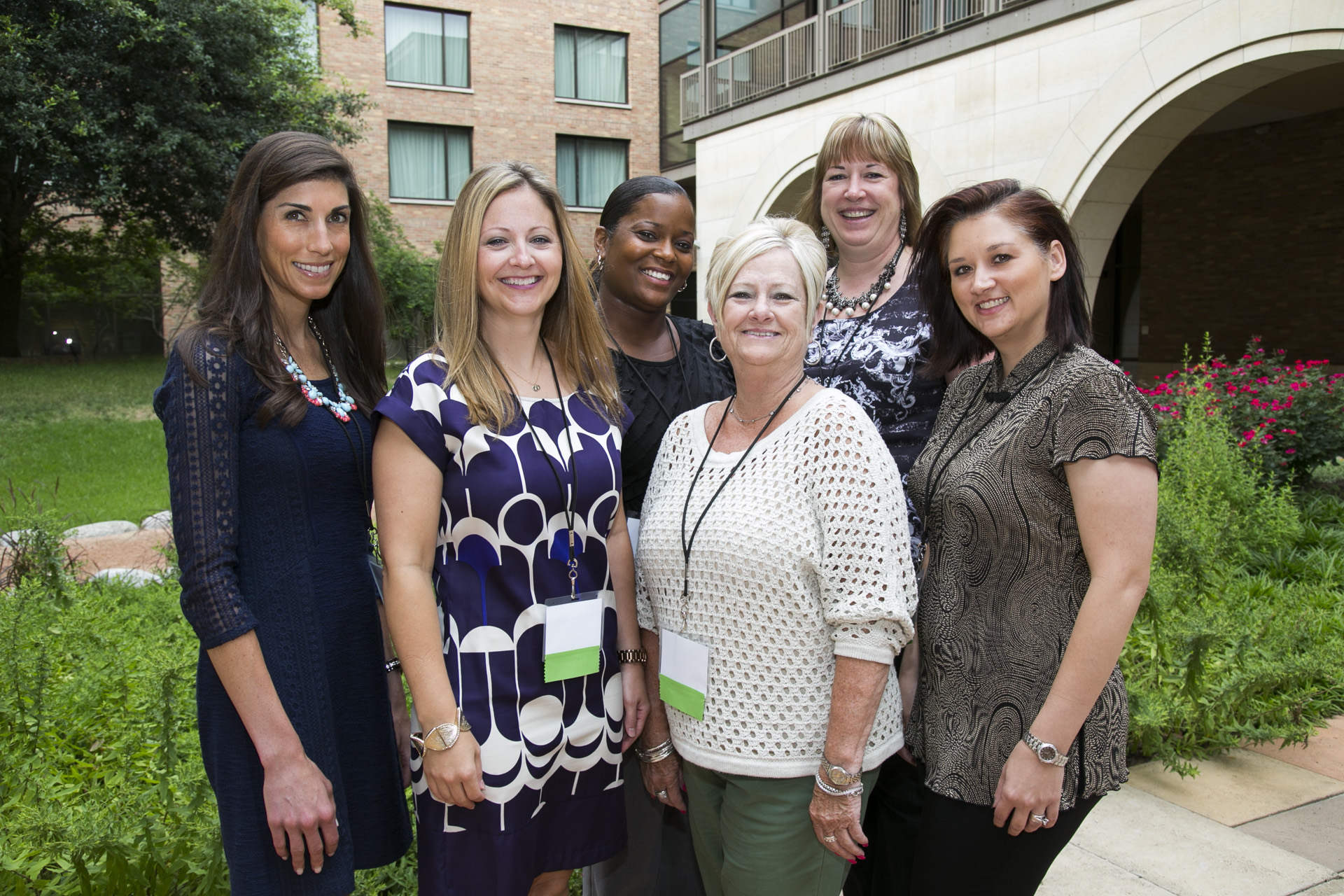
Writing to Learn
Writing to learn is a research-based practice that typically incorporates four strategies: (1) note taking, (2) summary writing, (3) answering or creating and then answering questions, and (4) extended writing. At Wilkinson Middle School, we combine three of these practices and refer to this as the “Wilkinson close reading” strategy, which is used in several of our content areas.
Science
With below-grade-level reading and comprehension difficulties posing a prevalent problem for so many students, we have noticed that the writing to learn strategy levels the playing field and helps even our struggling readers gain meaningful insight when reading passages. We use a three-step process that includes having students (1) take notes while they read, (2) write a brief summary after reading, and (3) generate two questions about the text and answer those questions. Before we began using this strategy, we asked students to read information above their grade level, but we did not support the students. By using this strategy at least twice each week in our science classrooms, students learn how to read critically and gain a better understanding of the Texas Essential Knowledge and Skills. We are the most economically disadvantaged middle school in our district, and we now have the highest science scores.
History
The history department also uses a version of the writing to learn strategy with expository texts and primary source documents. When applied in our history classes, students find the important information while they read, turn and talk with their neighbors, and create questions about what they read. We feel this strategy helps our seventh- and eighth-graders understand how to read these texts and locate and understand the important information. The strategy helps students comprehend what they read without becoming overwhelmed with the reading passage.
We also use exit ticket quick writes. This is a great way for students to process what they learned and for teachers to see whether students mastered the content. (See more information about this strategy below.)
Reading
In reading classes, the writing to learn strategy has helped teachers understand what students should do before, during, and after reading a text. Before using this strategy, teachers spent far too much time in the prereading phase and not enough time actually reading the text. Teachers now have a better understanding of how much time to spend in each stage and what exactly to do and have students do. It has also provided teachers with research-based strategies for students to use while reading. The strategy has greatly improved reading comprehension and has given teachers a way to monitor comprehension, so they can make proper adjustments.
For more information, see the following resources:
Learning Across the Curriculum packet from Teaching That Makes Sense
Writing Across the Curriculum packet from Public Schools of North Carolina
Adolescent Literacy Toolkit (sample lesson plans) from the Council of Chief School State Officers
Exit Tickets
Math
The math department asks students to create an exit ticket at the end of each class period by writing about a specific topic from the day’s lesson. This exercise requires students to process what they learned in math and write about it in their own words. The following day, we ask the students to go back to their exit tickets and read what they wrote the day before. This review helps put their minds on the right track for the new day and provides another reminder about what they learned the previous day. This year, we have passed the seven other middle schools on our district testing, which makes us the highest-scoring middle school in seventh- and eighth-grade math.
For more information, see the following resource:
Information and video on exit tickets from The Teacher Toolkit
Explicit Instruction With Modeling and Think-Alouds
English
English has seen incredible gains in writing by making instruction more explicit. First, teachers keep the “I do, We do, You do” phases of instruction in mind as they plan and teach. Teachers first model a particular writing skill, then teachers practice the skill with students, and finally, students practice the same skill independently while the teacher monitors. It is essentially a way to scaffold that begins with a high level of teacher support that gradually decreases until students are confident and competent enough to move to independent practice. In addition to building confidence, this process has helped students understand exactly what is expected of them. In the past, writing tasks were unclear and even somewhat abstract. Because teachers now begin by modeling exactly how they would approach the particular writing task, students are clear as to what is expected. If students continue to struggle after the teacher modeling stage, there are plenty of opportunities for more practice with the help of the instructor in the “We do” stage. Teachers can spend as much time in this stage as necessary until they feel their students are ready to move to the “I do” stage. This flexibility is crucial because it allows teachers to move at an appropriate pace.
Another strategy we have implemented is think-alouds, which we use simultaneously with the “I do” stage of instruction. Think-alouds allow teachers to voice their own thought process during a writing task, so students understand the internal dialogue of a good writer. Students do not inherently know how to have this internal dialogue, so we need to teach them. As a result of listening to their teachers, students learn to have their own internal dialogue wherein they analyze their writing and make changes and improvements.
As a result of both strategies, writing test scores have improved immensely. We were significantly below the district average on our district testing when the school year began, and now we are even with the district average. Additionally, teachers have reported that student writing has improved and that students are much more confident in their abilities. Teachers have also reported being able to decrease the amount of support they must provide, which will undoubtedly help students to be more successful on our upcoming state exams.
For more information, see the following resources:
Video of I do, We do, You do from The Teaching Channel
Professional development module on Self-Regulated Strategy Development from The IRIS Center (an example of explicit writing instruction)
Overall, we are pleased with the gains we are making in every subject area. Next month, we will train our teachers on a strategy called talk, read, talk, write, which is another way to increase the reading and writing that happens on our campus. We know that for our students to be successful in our classrooms, on state tests, in college, and in their careers, they have to become critical readers and writers.
References
Applebee, A. (1984). Writing and reasoning. Review of Educational Research, 54, 577–596.
Klein, P. (1999). Reopening inquiry into cognitive processes in writing-to-learn. Educational Psychology Review, 11, 203–270.
Graham, S., Cappizi, A., Harris, K. R., Hebert, M., & Morphy, P. (2014). Teaching writing to middle school students: A national survey. Reading & Writing: An Interdisciplinary Journal, 27, 1015–1042.
Graham, S., & Hebert, M. (2011). Writing-to-read: A meta-analysis of the impact of writing and writing instruction on reading. Harvard Educational Review, 81, 710–744.
Southern Regional Educational Board. (2013). Get it in writing: Making adolescent writing an immediate priority in Texas. Retrieved from http://publications.sreb.org/2013/GetItInWriting_TX_Final.pdf
Graham, S., & Perin, D. (2007). Writing next: Effective strategies to improve writing of adolescents in middle and high schools. Washington, DC: Alliance for Excellent Education.
References for Quotes of Students’ Writing
Brodie, D. (1997). Writing changes everything. New York, NY: St. Matins.
Charlton, J. (1980). The writer’s quotation book: A literary companion. Boston, MA: Farber & Farber.
Henriksson, A. (2001). Non campus mentis. New York, NY: Workman.
Linkletter, A. (1962). Kids sure are funny! New York, NY: Random House.
Safire, W., & Safir, L. (1992). Good advice on writing. New York, NY: Simon & Schuster.
